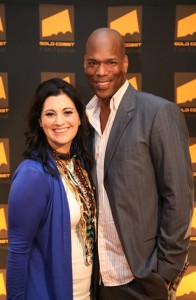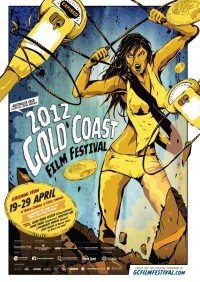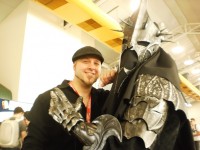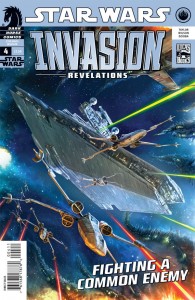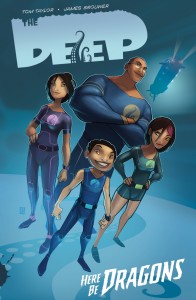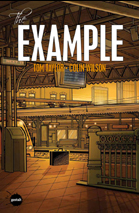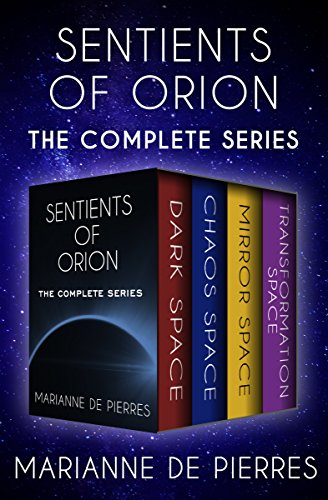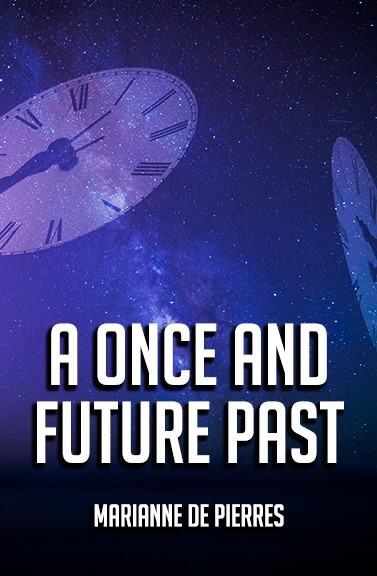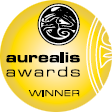Wayne Haag graduated from Royal Melbourne Institute of Technology with distinction in 1994 with a BA in Illustrative Photography.
His RMIT portfolio led to matte painting on The Fifth Element and Red Corner whilst at Digital Domain in Los Angeles. A return to Melbourne saw work with Complete Post then another shift to Sydney for Farscape Season 1 TV series with Garner Maclennan Design. The next major film work took Wayne to New Zealand for Peter Jackson’s The Lord of the Rings trilogy at Weta FX where he was responsible for several of the key shots of the film.
Upon his return to Sydney, Wayne then co-founded Emerald City Design in 2003 and served as its Creative Director for two years before moving back to freelance work. He was responsible for award winning TVC designs for clients such as Singapore Airlines, Sony and Telstra. A move into Production Design for the animated feature The Fourth Magi was next but the project was cancelled before going to production. Book cover artwork for major publishers, a series of large scale oil paintings for a mural project and private painting commissions round out his professional work. Wayne’s focus is now on creating epic genre Oil Paintings that are typical of the images seen in his film work.
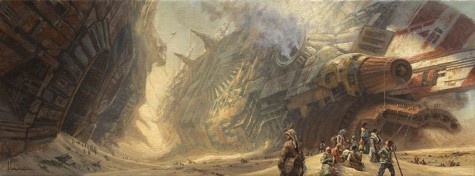
1. How did your background lead you to working as an artist? Were there clear early signs, or did you stumble into it?
No stumbling, I knew exactly what I wanted to do as a kid. I was always drawing, everywhere … until … one day, a kid came in from another school and just blew everyone away with his skill. I remember thinking that I couldn’t compete with that, nor with what I perceived to be his conceptual thinking. This was around my year 8 at Tech. I was coincidently getting interested in photography at the same time so I gave up on drawing and painting. It was a huge mistake now that I look back on it.
I was also a lazy student, school bored me to tears, art class was rubbish anyway and the only thing that held my attention was Media Studies. My teacher actually arranged for me to interview Anthony Daniels (C3PO) as he was out promoting Return of the Jedi at the time. It was one of the few highlights I have of school. I also experimented with video effects and stop motion photography. Obviously Star Wars was the big influence here, particularly the special effects aspects, and that funnily enough eventually led me right back to painting!
It was still quite some time before I started working as an artist however. I completed my Electronics qualification with the Dept of Defence, at an Ammunition Factory for four years and stayed on for another two and half years. I took retrenchment in 90′ and enrolled in the BA Photography course at RMIT the following year. I graduated in 94′. I didn’t start working as a professional artist until April 1996 at Digital Domain, in LA, matte painting on The Fifth Element.
2. What is the most satisfying project you’ve worked on and why?
The Fifth Element, hands down. It was my first real film job. I achieved my dream, made it to Hollywood, it was a scifi film, one that was partly designed
by the French comic book artist Moebius, who I love. I met some truly awesome people and formed friendships that I still have today. I learnt so much, so fast and pulled off three of the biggest shots in the film. I did have help initially but I was let loose soon enough. The production ran like a Swiss watch, there was very little stress and it was always, always about the art, never about the technology that created it. We also had tons of time to work on our shots. In the world of film visual effects, this was Shangri-La!
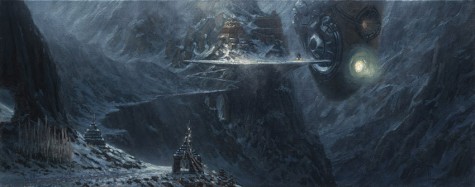
3. What inspires you to create science fictional landscapes?
First off, it’s that sense of wonder. It’s what we’re all looking for in any good sf, book, art or film. I want to be transplanted into a new world and feel that place, smell that world, meet those people and go with them on their journey. I want to wonder at it all and still be left to imagine more.
Prior to any film inspiration as a kid, it was SF art that adorned the covers of books that really hooked me. Artists like Jim Burns, Tim White, Chris Foss, Peter Elson, Angus McKie and John Harris, all Englishmen and John Berkey from the US. There are probably others I’ve missed here. Not that I knew their names then but the artwork floored me. There was some fantastic SF art books also floating around in the 70’s that blew me away. It’s the one thing a static painting has over cinema, you can stare at it all day and lose yourself in that world.
My predilection for abandoned spacecraft hulks stems from my love of discovering old factories that boys will ‘explore’ when un-supervised! I’m fascinated with the stories that may have happened in these old run down places. Apply that to some old derelict spacecraft half buried in a field and now you’re ringing my bell!
Beyond the original childish inspiration however, and I say that in the positive sense, the derelicts being dismantled in my paintings are reminiscent of the shipping breaking in places like India and Bangladesh. The societies that develop around such industries and ships are incredible and heart breakingly tough. Those that control those industries and those that are slave to them. I want to explore SF with the eye of a photo-journalist and start introducing people into the paintings, start depicting scenarios that viewers can wonder at and also relate to on a slightly more serious level.
My recent oil painting work also stems from the frustration of never having matte painted on glass like they did in the old days of VFX. I would have killed for that experience!
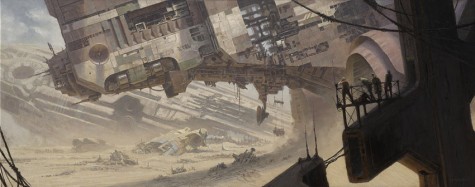
4. What would you like to be doing professionally in ten years’ time?
At the very least, help expand the notion of what is possible narratively with the art form. I would also like to be exhibiting in mainstream galleries and demonstrate that genre art can have something to say beyond the mere packaging of a book. Book covers have been the home of SF art for years and now the e-book revolution is changing the game. Where does book cover art sit now? That tiny bit of real estate, that was already rather minuscule, is disappearing completely, both at point of sale and on the book itself. It will open up opportunities for the visual expression of SF ideas elsewhere and allow for fresh new images and avenues of exhibition.
I firmly believe that artists should just create the work they love and leave it to the industries to find them. The idea that an artist must go into computer games design, or film matte painting or book cover illustration is silly. Paint what you want and see who knocks on your door, it may be all three industries.
My paintings are also forming the basis of an illustrated story, possibly novella or novelette length, that I have been working on for a few years now. I may eventually write it or hand it off to someone else, not sure yet, it’s still very rough. The paintings will offer another point of view into the same world, not a literal visual description of a scene as written, although that may happen here and there, but I’d like for the words and images to be divergent to some degree. Kind of like binaural beats where you have two slightly different frequencies played into each ear and your brain makes up the difference as a third beat. I’d like the story and images to combine within the reader/viewer’s brain creating that third reality.
But as long as I’m painting, I’ll be happy!
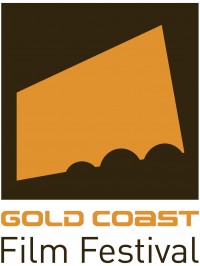 How did you become involved in the GCFF? What is your work background? And your current role with the festival?
How did you become involved in the GCFF? What is your work background? And your current role with the festival?